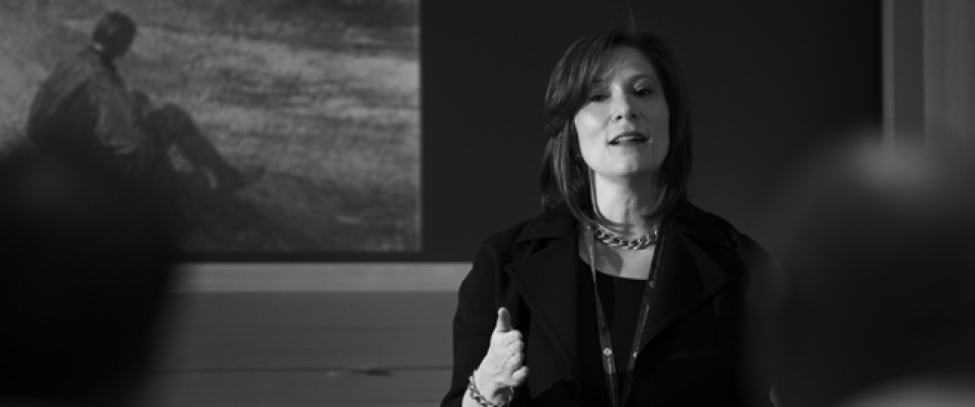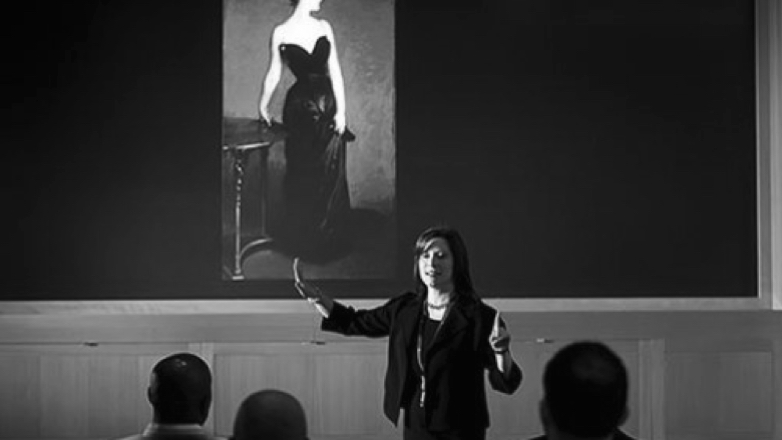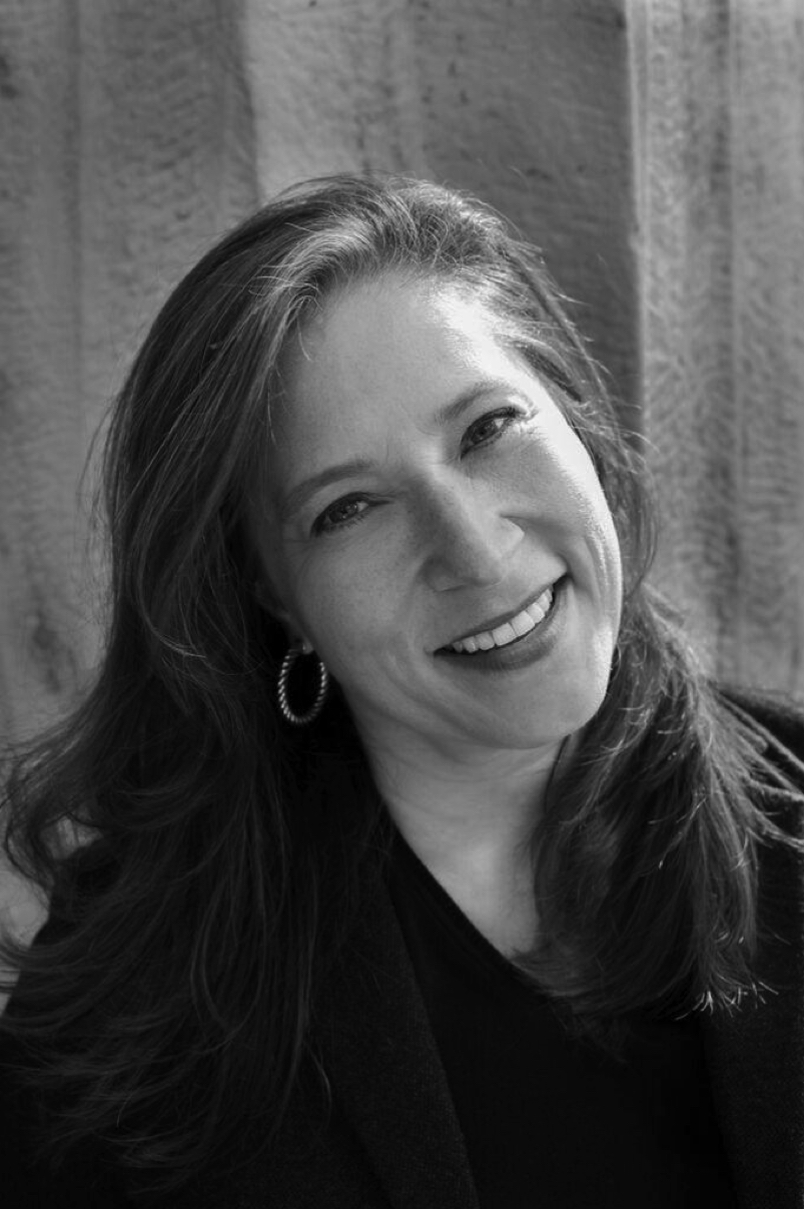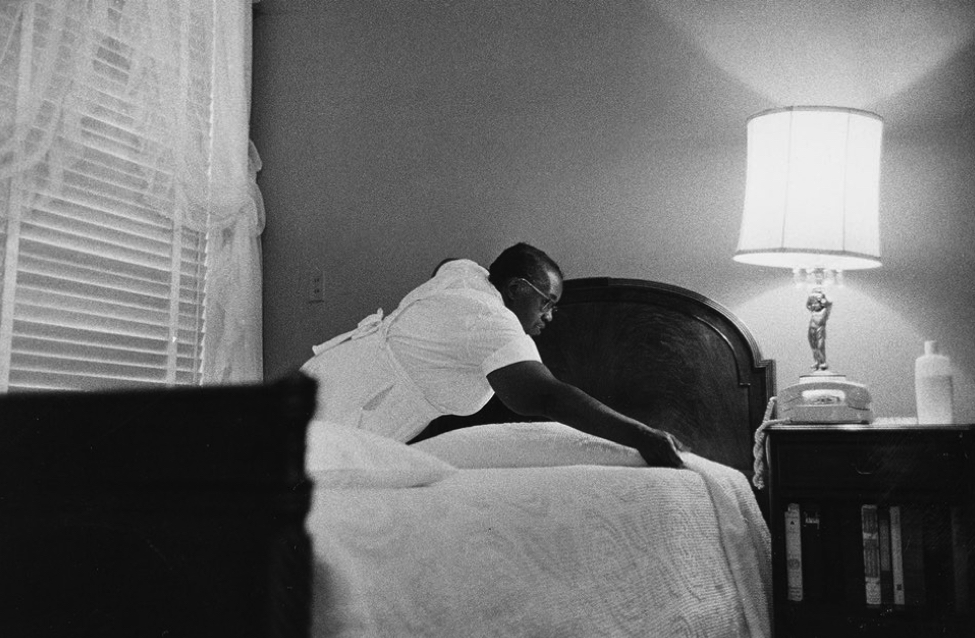Author and art historian Amy Herman proves how the power of perception can improve your life—from 9-to-5 and beyond
The minute we cracked open Amy Herman’s book, Visual Intelligence: Sharpen Your Perception, Change Your Life, we were hooked. Her story alone is fascinating: a background in art history and law led her to an unlikely calling: teaching police officers how to hone their skills of perception by studying the works of the great masters. According to Herman, visual intelligence is the ability to see what others don't—and it’s not just for cops. Herman believes that flexing one’s muscles of perception can help you navigate everyday situations with greater ease, improving business acumen, co-worker relationships, and more. Check out her answers to our burning questions, complete with visual cues from a few past presidents and multiple reminders to put down that phone (just wait until after you read her Q&A, wink wink).
1.
If you're a newbie to the art of perception, what's one thing you can do to begin to practice and improve it your life?
Amy Herman: It sounds overly simple, but set aside a certain time of the day to disengage from technology. Put down the phone, step away from the computer, and turn off the TV. See what it is that you notice in those 15 minutes or half an hour. You could take a walk, cook a meal, or go on errands. Pay particular attention to the details you notice around you that wouldn’t be apparent if you were distracted by technology. Think about how you might narrate what you see. For example, take a look at this photo by William Eggleston. It is an untitled work, but in parentheses it says “Lucille Fleming, Sumner, Mississippi” and is dated 1960-65. Some might see it just as it is: a black woman making up a bed in a hotel room. However, when I see it, it represents something entirely different to me. I spend half of my life in hotel rooms and I never, ever forget all the people who are working so hard to make those rooms clean and comfortable for guests who never meet them. There is a quiet dignity to the work. Observing this beautiful photograph reminds me of that.
“Noticing works of art—both beautiful and provocative—in one’s vicinity enhances our quality of life by visually engaging us in a way that technology cannot.”
2.
We love how you encourage your students to turn off their technology during class in order to engage their senses. Can you speak a little more about this?
AH: Stepping away from our phones forces us to engage more actively in the world around us. That can happen in the form of speaking to a stranger, looking up at the sky, or noticing a mural on a building wall that you have walked past innumerable times but never noticed. Does any of this make a difference? Absolutely. Engaging with new people creates new connections that lead to other opportunities both professionally and personally. Knowing more about your surroundings promotes not only situational awareness for safety, but also a sense of belonging in a physical community—not just a digital one. Noticing works of art—both beautiful and provocative—in one’s vicinity enhances our quality of life by visually engaging us in a way that technology cannot.
3.
How can kickstarting our observational skills help us when, say, interviewing with a potential employer or potential employee?
AH: Good observational skills improve human engagement. If you notice that someone is conservatively dressed for an interview but is wearing bright green socks with purple polka dots, you might compliment them on their fashion choice. This interaction can lead to a whole other discussion that provides insights into who that person might be, beyond what shows up on paper. Anyone can look good on paper, but you really need to observe someone in conversation to know if they will be the right fit. Numbers, grades, and experience only go so far. Eye contact is another important indicator of engagement. Someone who is comfortable with human interaction will have no trouble making eye contact—which is critical in sales, management, and leadership. Let’s compare and contrast Lincoln and Washington in the two images below. Do we take the time to observe that Washington is so formal and looking away? Do we notice that even though Lincoln looks so tired and bedraggled, he nonetheless looks the viewer directly in the eye with a warm, welcoming gaze? These nonverbal cues can give us insight into how people will receive us and what we have to say.
4.
Large meetings are often tricky to manage in the sense of reading the room and truly hearing what's said versus what’s perceived to be said. Thoughts on how to navigate this type of situation?
AH: With any important gathering, the speaker must remember that every word counts, especially the initial ones. One of my favorite lines of feedback was when someone said to me, “You had me at hello.” Establishing your presence early on in a meeting allows you to develop a rapport with those in the room; once they are comfortable speaking, it gives you a chance to step back and observe. Treat each person with whom you are speaking as if they alone are in the room. Be sure to listen to their answers as much as your own words. Meetings can still be a dialogue, but remember that the consequences of your communications are amplified exponentially. Every word counts.
Take, for example, this photograph of the National Security Council, taken in the Situation Room at the White House on the morning that Osama bin Laden was killed. We see fear, anxiety, disbelief and total engagement. How do you read a room like this? Think about what is happening and with whom you would want to speak to get the fastest and most accurate information.
“Establishing your presence early on in a meeting allows you to develop a rapport with those in the room.”
5.
Based on your study of perception, would you say this C.S. Lewis quote is true, false, or somewhere in between? “What you see and hear depends a good deal on where you are standing; it also depends on what sort of person you are.”
AH: I agree completely with this statement, but in a way that might not seem obvious. What you see and hear depends not only on where you are standing physically, but also where you are standing in life. What have your experiences been? What have you seen and heard in your lifetime? Most importantly, how does it affect, or perhaps create a bias in you, whether towards or against what you see and hear? If you are a person who is open to others’ perspectives, it will change how you see and hear something. It will open you up to different interpretations. If you tend towards egocentricity, you may perceive your own interpretation as the only valid choice.
6.
Care to share the last book you read, the last movie you watched and the last show you binge watched?
AH: The last book I read was The Heart by Maylis de Kerangal; the last movie I saw was Lion; the last show that I binge watched was The People vs. OJ Simpson.
What’s your Visual Intelligence? Take the quiz.
Amy & the NYPD at the MET.
How Picasso helped solve a murder case.
Hmm, what if Picasso went 3D?
UP NEXT: ADAM PIORE










